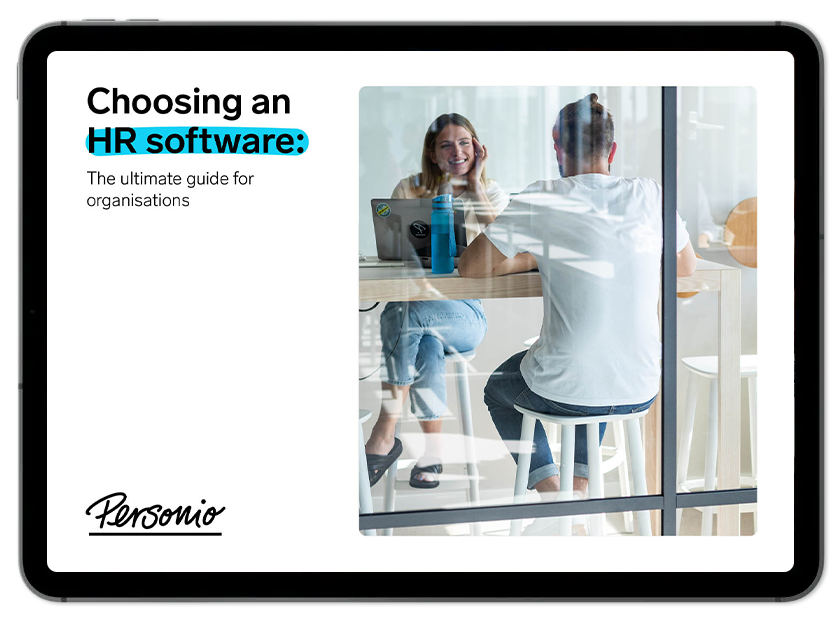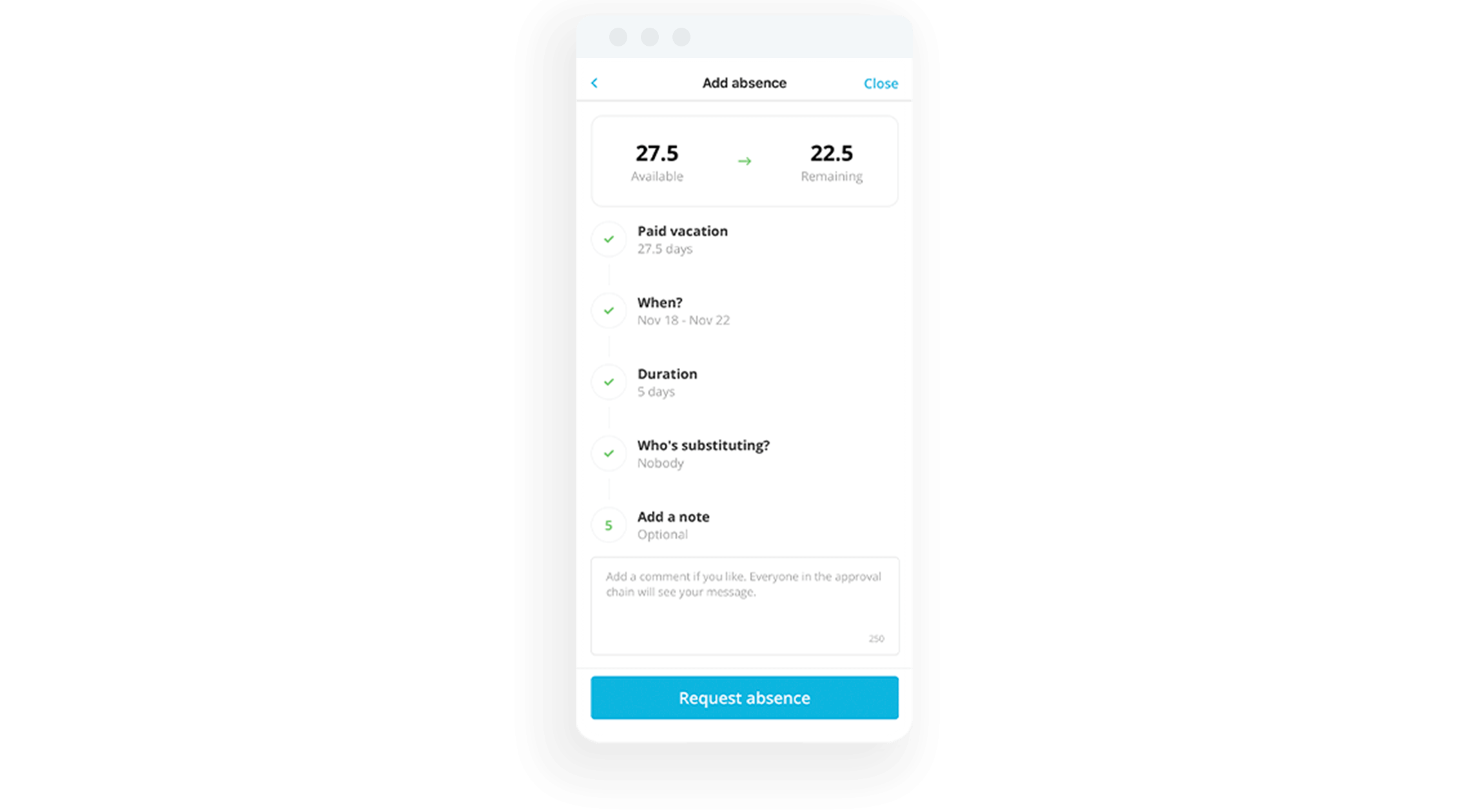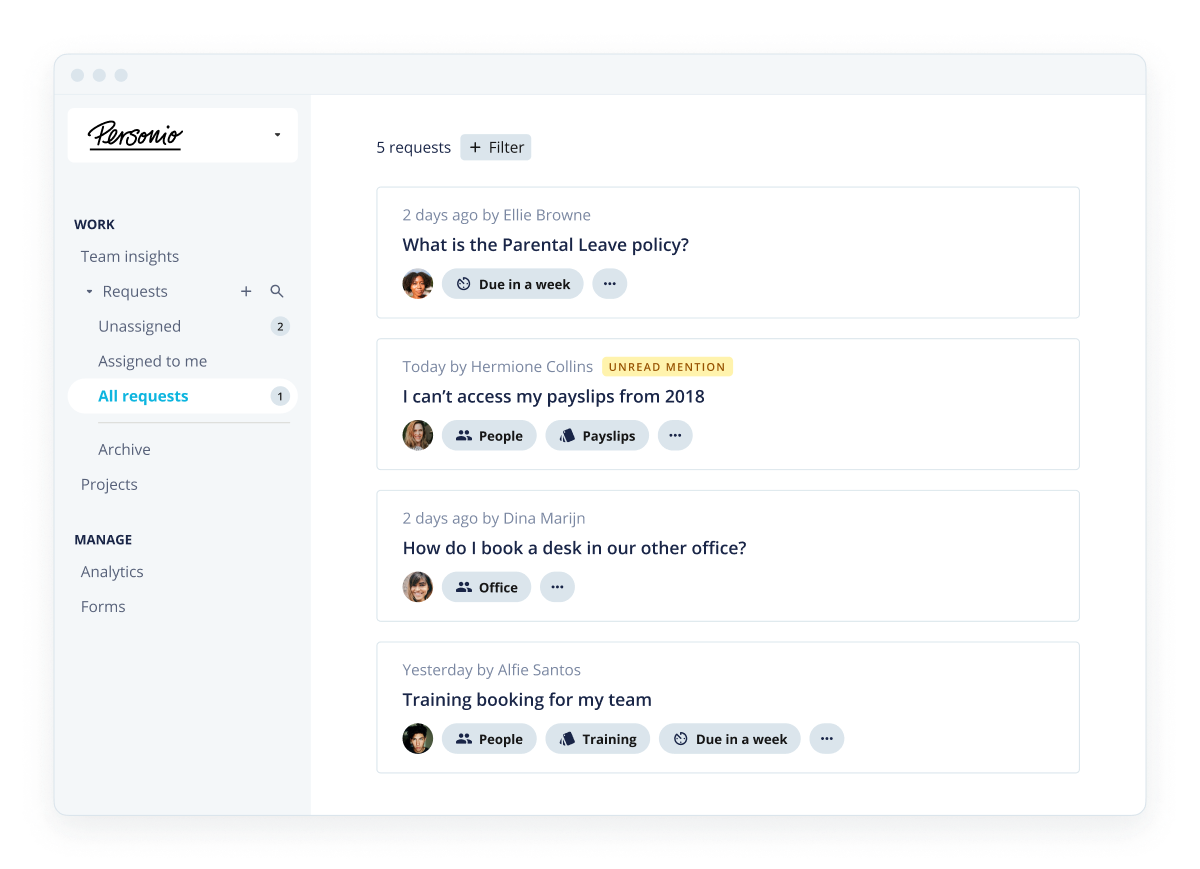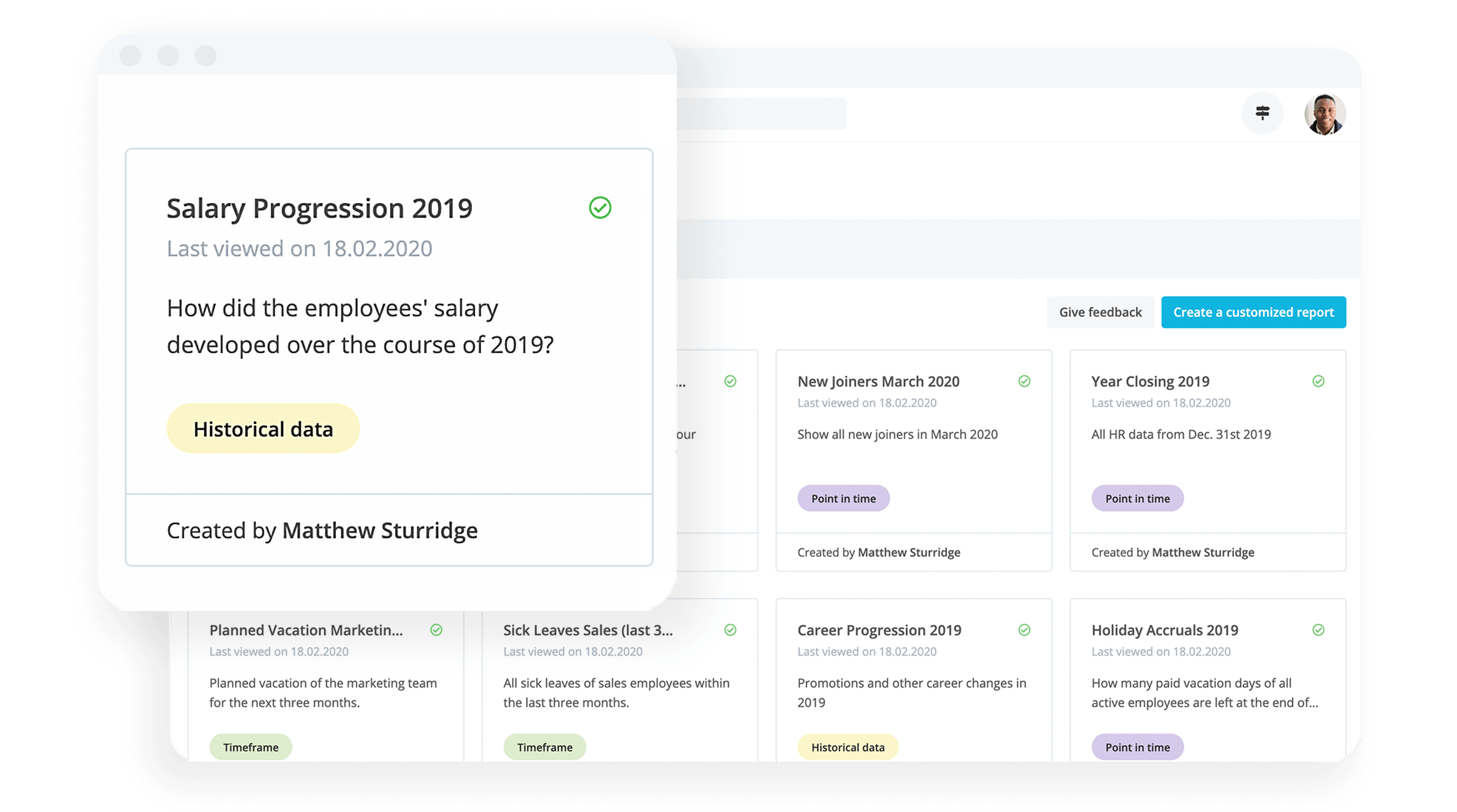HR Technology: Transform how HR work is done

Today’s HR teams have a lot on their plates. In this article, we explain how the benefits of HR technology and building out your "tech stack" can help streamline processes, save time and deliver better HR service delivery to your organisation.
How do you choose the best HR software for your needs? Download our guide for a helping hand.Contents
- 1What is HR technology?
- 2What is an HR tech stack?
- 3Why does HR technology matter?
- 4The major components of an HR tech stack
- 5Tips for using HR tech effectively
- 6Examples of how HR tech is used
- 75 HR technology trends your teams need to know
- 8The role of HR tech in your HR strategy
- 9Enjoy the value of Personio
What is HR technology?
HR technology (HR tech) is software or hardware that helps HR teams streamline and automate large parts of the HR function. It includes everything from employee engagement tools to payroll software to applicant tracking systems used in the recruitment process.
By making effective use of these tools, HR teams can deliver a more well-rounded and effective service to their organisations — while saving themselves time in the process.
What is an HR tech stack?
An organisation's HR tech stack are the collected tools and software they use to manage their people across the employee lifecycle. To manage the entire employee journey effectively, your tech stack should be both comprehensive and fully integrated.
Why does HR technology matter?
The major benefit of HR tech is that it allows teams to improve and simplify processes throughout the employee lifecycle. This gives employees a smoother and more positive HR experience, which can have an impact on the employee experience as a whole.
Ultimately, this can help:
Boost employee engagement
Raise retention rates
Positively impact productivity
At the same time, HR tech significantly reduces the administrative burden on HR teams. Instead of getting tied up with repetitive tasks, they have more time to spend on strategic initiatives like improving processes, supporting managers and delivering HR strategies that support the organisation’s overall business goals.
The major components of an HR tech stack

Whenever we talk about HR technology, we need to talk about effectively and sustainably building out your organisation's tech stack. Consider it your foundation for success, the thing that powers your people and your organisation.
There are five major components to every great HR tech stack:
Core HR: This involves having one place to centralise all of your people data and processes. A great HR management software is designed to do this piece well, bringing together all of your data under one roof (and guarding it under lock and key).
Recruitment (ATS): The ability to bring on new talent and ensure a great candidate experience is a central part of your HR tech stack. Gaining access to an effective applicant tracking system (ATS) is critical.
Employee experience: Modern HR teams need access to every element of the employee experience, think engagement surveys, salary reviews, whistleblowing support and additional innovations at scale.
Integrations: If your tools can't talk to one another, then your HR tech stack will never be able to thrive. You need a solution in place that builds out an ecosystem of interconnectedness that keeps your People function humming.
Support and service delivery: Things like chatbots can help expedite your HR service delivery capacities. In addition, the ability to access a community of support is an integral part of an HR technology.
Tips for using HR tech effectively
It’s not enough to simply implement a new software and hope it will transform your HR function. At best, your employees might use these tools ineffectively, which could slow things down and even cause mistakes. At worst, they won’t use them at all — which means a lot of wasted time and money in the long run.
But don’t panic! When used effectively, HR tech tools can help you to optimise your HR processes and deliver the best possible service to the rest of your organisation. Here are a few tips to keep in mind if you want to get the most out of the HR tech you invest in:
Keep your knowledge up to date: | Technology moves quickly, and HR leaders should too. That means that you should keep a close eye on the HR tech tools that are available, so you can maximise the benefits for you and your team. |
Opt for all-in-one or multi-functional tools: | There are so many different HR tech tools out there that you can risk overwhelming your team if you ask them to use too many. For best results, look for tools that serve more than one purpose, such as software that can handle both payroll and benefits administration, for example. |
Adapt and update your policies as technology evolves: | HR technology changes the way that people work. That means you’ll need to keep a close eye on your policies and procedures to make sure they’re still fair, consistent and reflective of reality. |
Collaborate with IT to improve the employee experience: | In most organisations, IT manages the rollout and maintenance of new tools and technologies. But the HR team is responsible for supporting and helping people to use HR tech tools. By collaborating closely with IT, you can ensure you and your team are getting the best out of the tools you use. |
Tackle user resistance through training and support: | Any new technology inevitably comes with a bit of resistance. People don’t tend to like change, and might feel threatened by new technologies that seem to be replacing part of their role. To avoid any negative feelings, deliver training on how HR tech should be used and how it will improve things for every member of your team. |
Free guide: How to choose a great HR software

Can an HR software truly benefit your bottom line? It depends on your decision. Download our free guide to choosing the ideal solution for your organisation's needs today.
Download for freeExamples of how HR tech is used
Organisations use different types of HR technology at every stage of the employee lifecycle, from talent attraction and recruitment right through to exit.
Here are some examples of common types of HR tech that you might already be using:
Applicant tracking systems (ATS)
Candidate relationship management (CRM) software
Employee referral software
Payroll software
Benefits administration software
Employee engagement tools
Learning and development platforms
Performance management tools
Workforce analytics tools
5 HR technology trends your teams need to know
The world of tech is constantly moving. To help you stay ahead of the curve and get the most out of HR tech for you and your team, here are a few trends you should be aware of.
1. Focus on employee experience
HR is no longer the dry, administrative function it was once seen as. Instead, it has a much greater focus on the employee experience — so it makes sense that HR tech tools do too. Over the last few years, we’ve seen a rise in tools that aim to give employees a positive, friction-free experience from onboarding to offboarding.
2. Employee self-service solutions

Employees don’t want to have to come to HR for every simple request or question. And frankly, HR teams don’t have a lot of time to spend on this sort of thing either. That’s why modern HR technology often includes an employee self-service (ESS) platform or intranet. This way, employees can complete simple tasks like checking payslips, changing their contact details or submitting leave requests, without having to go through HR.
3. Workflow automation
HR involves a lot of repetitive processes. And doing the same things again and again takes up a lot of time for HR teams — leaving them very little to spend on more strategic work. Many modern HR tools (including Personio) include workflow automation for common administrative processes like onboarding, leave requests and performance reviews.
4. Remote-friendly tools
Over the past few years, we’ve seen a huge boom in remote and hybrid work. But for remote work to be effective, employees need to be able to access the same tools and platforms from home as they can in the office. That’s why many modern HR tech solutions come with remote access possibilities and mobile apps, allowing employees to work from anywhere.
5. AI-enabled HR tech

Many of the HR tech tools on the market today encompass artificial intelligence (AI) in some way. This new technology allows them to go even further in supporting HR teams with their processes and procedures. When these tools are used right, employees still get the ‘human touch’ they need to feel supported — but HR teams benefit from a greatly reduced administrative burden.
The role of HR tech in your HR strategy
HR teams can use technology to optimise work and increase the value they bring to every employee across the organisation. More than this, HR tech gives HR teams time to focus on more strategic initiatives and ensure they’re doing everything they can to support the organisation’s mission, vision and values. Put another way, including HR tech in your HR strategy can help you to support your business in reaching its overall strategic goals.
Enjoy the value of Personio

Looking for an example of a piece of HR tech that helps HR teams to streamline processes, improve the employee experience and make stronger, data-driven decisions?
Personio is an HRIS that gives HR teams back the time they need to focus on what really matters: people. Want to see it in action? Book your free demo to get started.
